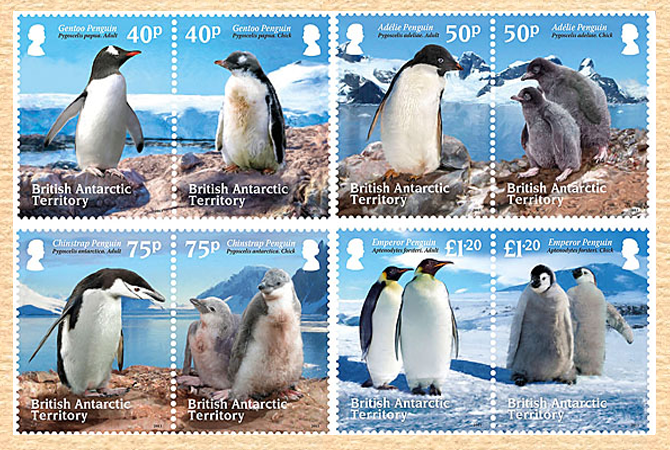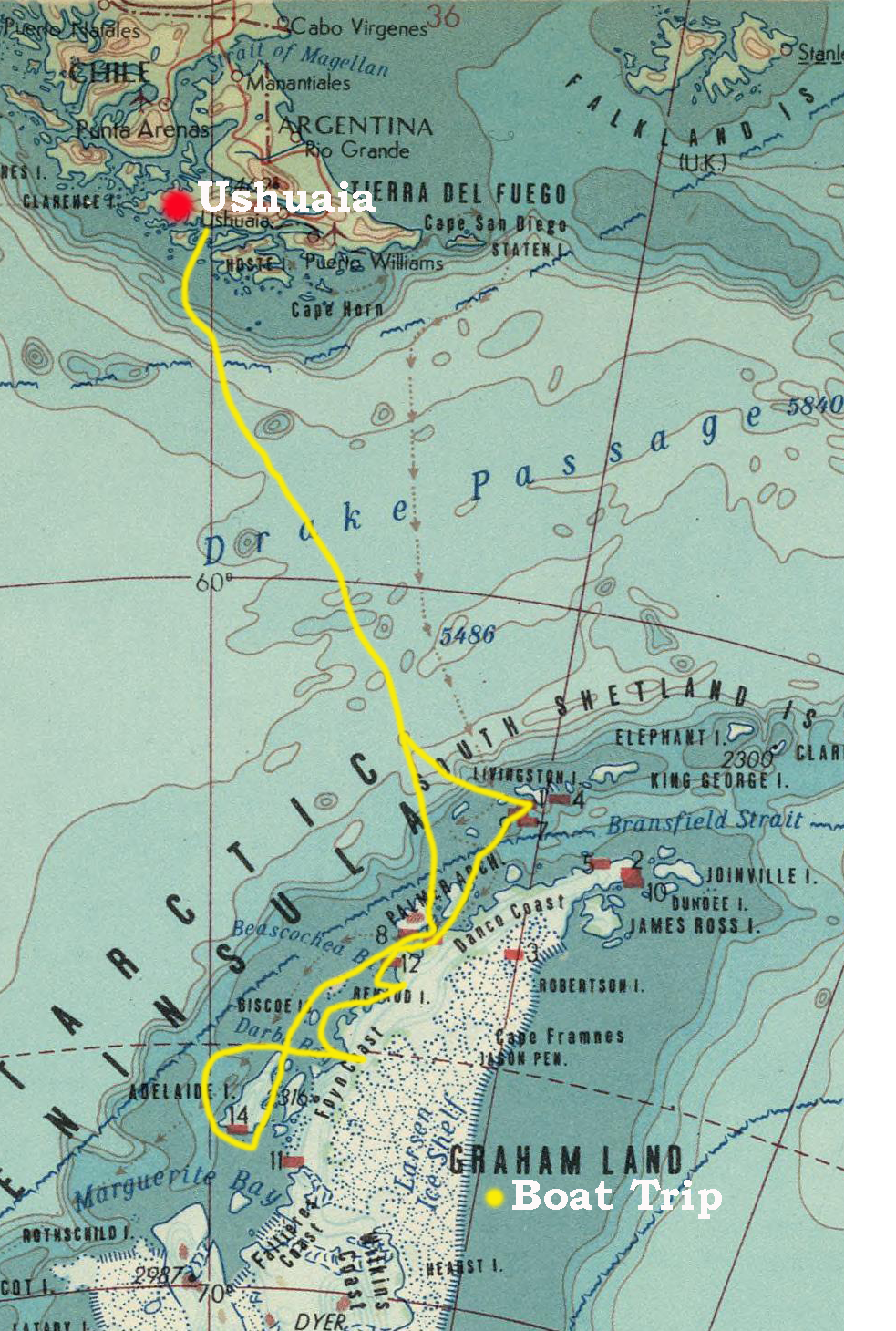
18 March - 31 March, 2019
Lower fare in doble Cabin- 6.940€
Highest fare in double Cabin 7.260€
This Polar Circle and Antarctic Peninsula cruise will take you further south of Antarctica, crossing the Polar Circe. This expedition cruise passes through waters travelled by Humpback, Minke and Fin whales. Anchoring in various spots around the region, the expedition offers the chance to hike, and Whale safari trip also a extrem Polar diving ( the last one not included in the price)
Adelaide & Gentoo Penguins, Leopaard, Crabeater & Elephant Seals, Killer & Humpback Whales.
About 98% of Antarctica is covered by the Antarctic ice sheet, a sheet of ice averaging at least 1.0 mile (1.6 km) thick. The continent has about 90% of the world’s ice (and thereby about 70% of the world’s fresh water). If all of this ice were to melt, sea levels would rise about 200 ft (60m). Antarctica is divided into two contrasting parts by the Transantarctic Mountains that cross the continent close to the ‘neck’ between the Weddell and Ross Seas.
West Antarctica, which includes the Antarctic Peninsula, is smaller and consists of four land units each with a different history. There has been major volcanic activity here in recent geological times and there are still a few active volcanic centers. Deep waters exist between land units and the West Antarctic Ice Sheet, which can be considered to a be floating ice mass held in place by land peaks. The West Antarctic Ice Sheet has been of recent concern because of the real, if small, possibility of its collapse. If the sheet were to break down, ocean levels would rise by several metres in a relatively geologically short period of time, perhaps a matter of centuries. ALE has been supporting researchers from the University of New South Wales who are investigating how West Antarctica has responded to temperature changes in the recent geological past.
Most of East Antarctica is still not well known by geologists but it does include the Transantarctic Mountains. The shield is very depressed in the centre, where it carries the bulk of the Antarctic ice sheet. Large areas lie deeper than 3,280ft (1000m) below sea level.
Few terrestrial vertebrates live in Antarctica. Invertebrate life includes microscopic mites, lice, nematodes, tardigrades, rotifers, krill and springtails. Recently ancient ecosystems consisting of several types of bacteria have been found living trapped deep beneath glaciers. The flightless midge Belgica antarctica, up to 0.2 inches (6mm) in size, is the largest purely terrestrial animal in Antarctica. The snow petrel is one of only three birds that breed exclusively in Antarctica. The wide variety of marine animals includes blue whales, orcas, colossal squids, fur seals, and several species of penguins. Emperor and Adélie penguins make the Antarctic continent their true home, while others (chinstrap, gentoo, and macaroni) breed on the northern tip of the Antarctic Peninsula, where conditions are less harsh.
While searching for marine reptile bones, reasearchers came across unusual bones on the ocean bottom near James Ross Island. The fossilized remains included pieces with characteristics only seen in meat eating theropods or “beast-footed” dinosaurs like Tyrannosaurus rex and smaller carnivores. The team eventually concluded that they had found a species of dinosaur never previously recorded.
 Day 1: Embarkation in Ushuaia
Day 1: Embarkation in UshuaiaIn the afternoon, we embark in Ushuaia, Tierra del Fuego, Argentina, the southernmost city in the world located at the Beagle Channel and sail through this scenic waterway for the rest of the evening.
During these two days we sail across the Drake Passage. When we cross the Antarctic Convergence, we arrive in the circum-Antarctic up welling zone. In this area, we may see Wandering albatrosses, Grey-headed albatrosses, Black- browed albatrosses, Light- mantled albatrosses, Cape petrels, Southern fulmars, Wilson’s storm petrels, Blue petrels and Antarctic petrels. Near the South Shetland Islands, we spot our first icebergs.
We will sail directly to “High Antarctica”, passing the Melchior islands and the Schollaert Channel between Brabant and Anvers Island. The Antarctic Peninsula is famed for its icy beauty and bountiful wildlife. During the days here, we will optimize the experience to get the best of everything. Sites that may be visited include: Cuverville Island, a small precipitous island, nestled between the mountains of the Antarctic Peninsula and Rongé Island where we will find a large colony of Gentoo penguins and breeding pairs of Brown skuas. In Neko Harbour, we may have the opportunity to set foot on the Antarctic Continent in a magnificent landscape of huge glaciers calving at sea level. Zodiac cruising offers a spectacular way to enjoy the landscape surrounded by ice incrusted alpine peaks. In Paradise Bay with its myriad icebergs, we may have the opportunity to set foot on the Antarctic Continent. Again, we may offer an opportunity for a zodiac cruise in the inner parts of this amazing waterway. In this area, we have good chances to see Humpback whales and Minke whales before heading south though the spectacular Lemaire Channel. After a long night of sailing west around the myriad of islands south of Lemaire Channel, we find ourselves near the Antarctic Circle. If ice conditions allow, we hope to sail through the narrow The Gullet between Adelaide Island and the Continent with spectacular scenery all around. We hope to get permission to land at Rothera, which is the primary British research station in Antarctica. Alternatively we explorer the area and make a landing one of the many islands in the area. Depending on the ice conditions, we may circumnavigate Pourqoui Pas Island named after the ship of the famous French explorer Charcot. The area is spectacular with narrow fjords and high mountains with cascading glaciers all around. On Horseshoe Island we find the former British Base Y from the 1950’ies, which now stands unmanned but almost fully equipped from the time it was in service. Stonington Island is home to the former US East Base (1939-41) and later the British Base E. Base E was occupied until 1975. We may attempt a landing here which will also mark our southernmost landing site of the trip. In the morning of day 9 we aim find ourselves near the Antarctic Circle once again as we head north into Crystal Sound. We have an excellent chance to see Humpback whales here as we approach Fish Islands for a Zodiac cruise and possible landing. As always, the scenery is unparalleled in beauty and we may well see more Adélie penguins among the myriads of icebergs large and small. Petermann and Pléneau Islands offer a great variety of bird life and some excellent opportunities to Zodiac cruise amongst icebergs with good chances to see both Leopard seal and Crabeater seals. Minke whales and Humpback whales are also often spotted in this area along with Gentoo penguins and Leopard seals. Further north, we reach the Melchior Islands; a beautiful landscape with icebergs, where we may encounter Leopard seals, Crabeater seals and more whales. From there we depart into the Drake Passage around noon.
On our way north a great selection of seabirds will follow the ship while crossing the Drake Passage.
We arrive in the morning in Ushuaia and disembark.
To Know more about the vessel "Ortelius"
please visit https://oceanwide-expeditions.com/our-fleet/m-v-ortelius